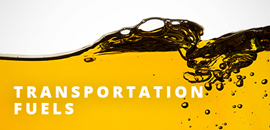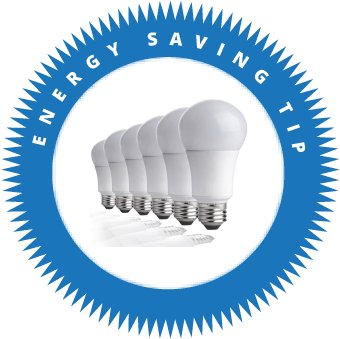PROGRESS REPORT
In January of 2009, Stephen F. Austin State University (SFASU) embarked on a mission to reduce utility consumption and associated costs by soliciting the expertise of an energy solutions contractor. Prior to that time, little had been done on campus to reduce energy or water consumption and curb associated costs. Building systems were often run manually, bypassing automated controls. SFASU's combined annual utility costs reached nearly $10.9 million in fiscal 2008, and the energy use index (EUI) peaked at 152.1 MBtu per conditioned square foot of space.
Stephen F. Austin (SFA) set an energy and water use reduction goal of 30 percent over a 10-year period, and Siemens Building Technologies Inc. was selected as the energy service contractor. An in-depth energy use survey was conducted, and key areas of improvement aimed at energy and water use reduction were identified and implemented. In completing all recommended conservation measures (Phases 1 and 2), annual utility costs were reduced to less than $7.5 million in 2013, while reducing the university's EUI to 118.0. Continued fine tuning of building systems and favorable utility rates further reduced the annual utility costs to $6.56 million in fiscal 2014. Summaries of Phases 1 and 2 are included below.
Phase 1 Summary:
- Start Date: July 2010
- Completion Date: December 2011
- Scope of Work:
- Energy Management and Control Systems— Chiller Plant Optimization
- Energy Management and Control Systems— Airside Optimization
- Water Management Upgrades (80 percent of total in Phase 1; 20 percent in Phase 2)
- Project Cost: $9,817,962
- Cumulative Eight-year Guaranteed Savings: $9,590,850
- Cumulative Eight-year Measured Savings: $14,168,369 (148 percent of guarantee)
Phase 2 Summary:
- Start Date: July 2010
- Completion Date: December 2011
- Scope of Work:
- Deferred Maintenance (Central Plant 1 boiler replacement, outside air handling unit— Music Building)
- Water Management and Upgrades (20 percent of total in Phase 2; 80 percent in Phase 1)
- Lighting Efficiency Retrofits (lamp technology and controls)
- Power Factor Correction
- Project Cost: $7,427,500
- Cumulative Eight-year Guaranteed Savings: $8,060,712
- Cumulative Eight-year Measured Savings: $8,556,647 (106 percent of guarantee)
To further improve upon these efficiencies, SFA commissioned another study (Phase 3) to identify additional facility improvements. These improvements were completed in March 2016. A summary of Phase 3 is included below.
Phase 3 Summary:
- Start Date: January 2015
- Completion Date: March 2016
- Scope of Work:
- Building automation/HVAC upgrades in 15 buildings (combined 1.3 million gross square feet)
- Deferred maintenance (Central Plant 2 and auxiliary building boiler replacement), lighting retrofits
- Sewer credit submetering for irrigation, cooling tower evaporation and swimming pool water.
- Project Cost: $11,345,915
- Cumulative 46-month Guaranteed Savings: $3,337,714
- Cumulative 46-month Measured Savings: $3,806,686 (114 percent of guarantee)
In addition to the projects described above, SFA implemented the Siemens Desigo CC Management Platform allowing facilities staff to further fine tune building systems by reviewing and analyzing current energy saving techniques as a means of continuous improvement in energy reduction initiatives related to building systems.
Following the Siemens projects, SFA has continued to make energy saving facility improvements by strategically replacing additional outdated equipment with new, more efficient equipment. The university has also moved exclusively to LED light fixtures for all new installations related to regular maintenance, renovations and new construction.
In fiscal 2022-23, SFA contracted out energy saving projects within the McGee Business building, including relighting the entire building with LED fixtures; installation of dimmer switches allowing for decreased light output and associated electricity consumption; and replacing all window shades with solar shades. These projects were funded through the Environmental Services Fee, a student fee for campus environmental improvement projects. Funding for the replacement of all water faucets in the McGee Business building was secured in fiscal 2024; the project will be completed in fiscal 2025. The 36 new low-flow motion sensor faucets will reduce water consumption in that building.
In fiscal 2024, SFA completed a major building renovation/construction project in the Griffith Fine Arts building. This project included replacement of all HVAC equipment, lighting and plumbing fixtures with new, more energy-efficient equipment and fixtures. The building envelope was also greatly improved by increasing the energy efficiency of the building. Another major project completed during fiscal 2024 was the expansion Power Plant I to now serve the Fine Arts building along with the Music and Boynton buildings. Prior to this expansion, each of these buildings had their own on-site heating and cooling equipment that was outdated and far less efficient than the equipment in the power plant.
Additional periodic replacement of aged equipment and continued fine tuning of building systems has further reduced the annual utility costs to $5.65 million in fiscal 2024.
GOALS
SFA has made tremendous strides in reducing utility consumption and associated costs by implementing various facility improvement measures as well as employing strategic utility contract negotiating techniques. As a result, the total annual utility spend (electricity, natural gas, water and sewer) has been reduced by 48 percent since the base year of fiscal 2008.
In fiscal 2024, SFA set new energy and water reduction goals aimed at reducing consumption over a 10 year period and will continue to research opportunities that will help achieve this goal. However, the university also underwent major leadership changes in fiscal 2024 by joining the University of Texas (UT) System along with the hiring of a new university president. SFA plans to engage new leadership and UT System peers to re-evaluate goals, methods and potential funding sources for employing new energy saving projects on campus.
| Utility | Target Year | Benchmark Year | Percentage Goal |
|---|---|---|---|
| Water | 2034 | 2024 | 10 |
| Electricity | 2030 | 2020 | 20 |
| Transportation Fuels | 2034 | 2024 | 10 |
| Natural Gas | 2034 | 2024 | 10 |
STRATEGY FOR ACHIEVING GOALS
SFASU will continue to build on the success achieved through the implementation of recent facility improvement measures, including the use of performance contracting; opportunities presented through the capital renewal process; taking advantage of available funding incentives; and by achieving best practices through its operations and maintenance programs. SFA will also consult with other UT System campus professionals in exploring energy reduction strategies. Specifically, this includes, but is not limited to the following:
Performance Contracting:
SFASU has already realized the benefits of performance-based contracts in its pursuit of achieving utility reductions. Due to the results achieved through this partnership, it is expected that SFASU will continue exploring other viable facility improvement measures in this manner.
Capital Renewal Program:
- Perform economic analysis and life cycle costing for major system purchases.
- Specify cool roofing technology for replacement projects.
- Upgrading constant volume air distribution systems with variable air volume systems.
- Replacing pneumatically controlled systems with direct digital control.
- Replacing boilers with more efficient condensing units.
- Upgrading existing high intensity discharge (HID) lighting at outdoor athletic venues to LED technology.
Incentive Programs:
- Apply for utility rebates where applicable.
- Utilize tax credits where appropriate.
- Applying for grants when available.
- Negotiate better rate contracts for utilities whenever possible.
Operations and Maintenance Practices:
- Controlling conditioned environments remotely through an integrated building automation system to approved standards and schedules.
- Continue upgrading lighting as reliable technological advancements dictate.
- Replacing motors with premium efficiency units; installing variable frequency drive units where feasible.
- Perform maintenance on all related equipment and components in accordance with manufacturer recommendations and established and evolving best practices.
- Monitoring and reporting consumption levels and variances for all utilities.
SFA has been actively seeking out energy consumption reduction projects and programs to offset rising utility costs. Several potential projects and programs have been identified, and university staff will continue to evaluate these and bring the best opportunities to upper administration for funding and implementation. These potential projects include the addition of solar panels on campus, additional campus relighting with LED fixtures, building envelope improvements, replacement of aging boilers and HVAC equipment, water saving plumbing fixtures and further fine tuning of building automation systems. SFA staff have identified an ERCOT Grid Reliability program call Demand Response that will not only reduce electric consumption, but provide a source of revenue that can be used to help fund energy improvement projects.
IMPLEMENTATION SCHEDULE
Fiscal 2025 - Re-evaluate energy consumption reduction goals and strategies to reduce energy costs, engaging new university administration and UT System cohorts and continue to evaluate opportunities and methods of achieving set goals.
Fiscal 2025 - Completion of new dining hall replacing the East College Cafeteria. The new dining hall will be far more energy efficient saving the university on utility costs.
Fiscal 2025 - Demolition of the Forestry building to make way for a new, more efficient building that will reduce energy consumption.
Fiscal 2025 - Explore program opportunities through BP Energy such as Demand Response.
Fiscal 2025-26 - Explore campus solar energy options and potential benefits as a means of offsetting electricity consumption.
Fiscal 2026 - Solidify a plan to reduce energy consumption through programs and facility improvements. This will likely involve the solicitation of a campus energy audit and selection of an energy service contractor such as Siemens or ProStar Energy Solutions.
Fiscal 2027-28 - Completion of the new Forestry building.
AGENCY FINANCE STRATEGY
- In addition to funding future projects with available capital improvement funds, SFA will explore energy service performance contracts and financing options available through energy solutions companies if needed.
- Explore potential state funding opportunities available to state agencies for energy reduction and environmental improvement projects.
- Explore federal tax credits provided by the Inflation Reduction Act, Part 179D, Tax Deduction Program, which provides a credit of $5/sq. ft. for qualified projects, as well as tax credits worth up to 40 percent of the cost of renewable projects.
- SFA utility managers will also work with in-house grant specialists to identify and apply for any available grant funding for energy and water reduction initiatives and related facility improvements.
- As a new member of the UT System, SFA will explore the possibility of obtaining Public University Funds (PUF) to fund capital improvement projects that will reduce energy and water consumption.
EMPLOYEE AWARENESS PLAN
SFA will reconstruct the campus sustainability website in fiscal 2025 to provide information and updates on energy and water use reduction initiatives. The website will be periodically updated with new and ongoing projects, and ways employees and students can help save on utilities. An informational email will also go out to all faculty, staff and students with awareness information at least once per semester. If the university enters into a Demand Response program, additional information and alerts will be sent out to the campus community (primarily by email) to notify them of curtailment activities and response action to any grid emergencies.






